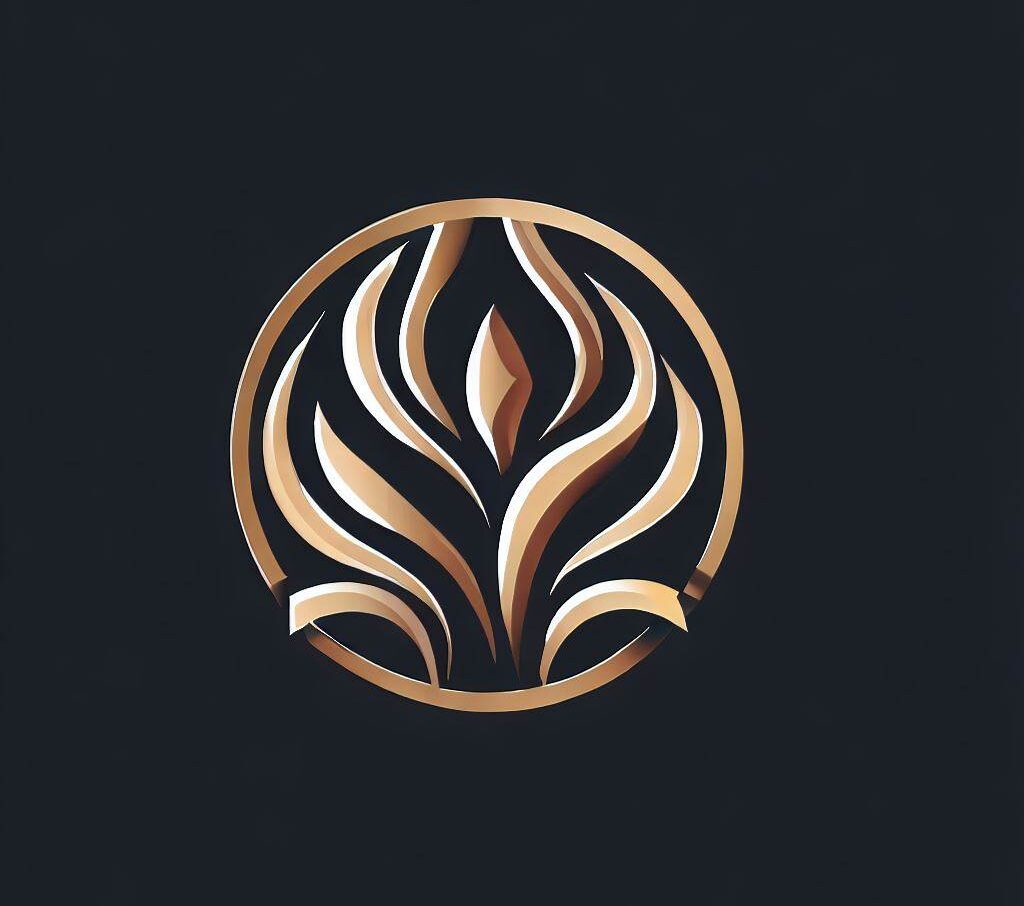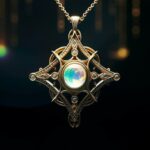The breastplate with 12 stones mentioned in the Bible holds significant meaning and symbolism, representing the divine connection between God and the high priest. According to the Book of Exodus, God instructed the high priest to wear a breastplate made of 12 different gemstones while praying. The stones represent the complete family of God and symbolize God’s loving leadership. Each stone is engraved with the names of the 12 tribes of Israel. The breastplate also included mystical objects called Urim and Thummim, which were used for divine guidance. The placement of the stones on the breastplate follows the birth order of Jacob’s sons, starting from the far right. The purpose of the breastplate was to remind the high priest of his role as a mediator and intercessor for the people. It also served as a memorial before God and a reminder of the priest’s obligations to both God and the people. Seeing the tribes represented on the breastplate helped the people feel seen, remembered, and cared for by God.
Key Takeaways:
- The breastplate with 12 stones symbolizes the divine connection between God and the high priest.
- Each stone represents one of the 12 tribes of Israel.
- The placement of the stones on the breastplate follows the birth order of Jacob’s sons.
- The breastplate served as a reminder of the high priest’s role as a mediator and intercessor for the people.
- It also served as a memorial before God, representing God’s loving leadership and the care for the people.
The High Priest’s Breastplate and Its Symbolism
The 12 stones on the high priest’s breastplate hold deep symbolism, representing the 12 tribes of Israel and their unique connection to God. According to the Bible, God instructed the high priest to wear a breastplate made of 12 different gemstones while praying. Each stone was engraved with the name of one of the tribes, symbolizing the unity and inclusion of all the tribes as part of God’s chosen people.
The placement of the stones on the breastplate followed the birth order of Jacob’s sons, starting from the far right. This arrangement emphasized the importance of each tribe and their role within the community. It also served as a reminder to the high priest of his duty to represent and intercede on behalf of all the tribes before God.
The significance of the breastplate extended beyond its representation of the tribes. It also served as a memorial before God, reminding the people of His loving leadership and guidance. The breastplate with its 12 stones brought comfort and reassurance to the people, assuring them that they were seen, remembered, and cared for by God.
| Tribes | Stones |
|---|---|
| Reuben | Sardius |
| Simeon | Topaz |
| Levi | Emerald |
| Judah | Amethyst |
| Dan | Sapphire |
| Naphtali | Diamond |
| Gad | Jacinth |
| Asher | Agate |
| Issachar | Azurite |
| Zebulun | Onyx |
| Joseph | Jasper |
| Benjamin | Chrysolite |
The Engraved Names and Divine Guidance
The engraved names on the 12 stones and the presence of Urim and Thummim on the breastplate reflect the high priest’s ability to seek divine guidance on behalf of the people. Each stone on the breastplate is inscribed with the names of the 12 tribes of Israel, representing the complete family of God. This intricate detail demonstrates the special role of the high priest as a mediator between the people and God.
The Urim and Thummim, mystical objects placed in a pouch on the breastplate, were used by the high priest to receive direct answers from God. It is believed that these objects were used to interpret God’s will and provide guidance on important matters. The breastplate, with its engraved names and the presence of Urim and Thummim, served as a powerful symbol of the high priest’s connection to divine wisdom and his responsibility to seek direction for the benefit of the people.
This divine guidance was essential for the high priest to fulfill his role as an intercessor and representative of the people before God. The engraved names on the stones and the use of Urim and Thummim showed the people that their concerns and needs were heard and cared for by God. It gave them comfort and assurance that the high priest, through his connection with the divine, could provide guidance and direction in times of uncertainty.
| Stone | Tribe |
|---|---|
| Ruby | Reuben |
| Topaz | Simeon |
| Emerald | Levi |
| Turquoise | Judah |
| Sapphire | Dan |
| Diamond | Naphtali |
| Jacinth | Gad |
| Agate | Asher |
| Amethyst | Issachar |
| Beryl | Zebulun |
| Onyx | Joseph |
| Jasper | Benjamin |
The breastplate with its engraved names and the presence of Urim and Thummim served as a powerful reminder of the high priest’s sacred duty to seek divine guidance on behalf of the people. It represented the deep connection between God, the priest, and the tribes of Israel. Through this symbolism, the breastplate brought comfort, reassurance, and a sense of belonging to the people, knowing that they were seen and cared for by God.
The Birth Order and Symbolic Sequence
The placement of the stones on the breastplate follows the birth order of Jacob’s sons, carrying symbolic significance that reflects the divine plan for the people of Israel. Each stone represents one of Jacob’s twelve sons and their respective tribes, establishing a visual connection between the breastplate and the chosen people.
The ordering of the stones is not arbitrary. It aligns with the sequence of Jacob’s sons as described in the Book of Genesis, starting from the far right. This intentional arrangement signifies the birthright and inheritance of each tribe, highlighting their individual roles and responsibilities within the community.
The symbolism of the birth order extends beyond merely representing the tribes. It signifies the divine plan and order established by God for His people. The precise placement of the stones serves as a reminder that each tribe has a unique purpose and role in fulfilling God’s promises and purpose for Israel.
| Stone | Tribe | Birth Order |
|---|---|---|
| Ruby | Reuben | Firstborn |
| Topaz | Simeon | Second |
| Emerald | Levi | Third |
| Turquoise | Judah | Fourth |
| Sapphire | Issachar | Fifth |
| Diamond | Zebulun | Sixth |
| Jacinth | Joseph | Seventh |
| Agate | Benjamin | Eighth |
| Amethyst | Dan | Ninth |
| Beryl | Asher | Tenth |
| Onyx | Gad | Eleventh |
| Jasper | Naphtali | Twelfth |
By wearing the breastplate with the stones in their designated order, the high priest carried with him the representation of God’s divine plan for the people of Israel. It served as a constant reminder of the chosen nature of each tribe and their collective responsibility to fulfill their God-given purpose.
Through this symbolic sequence, the people of Israel can find assurance that they are seen, remembered, and cared for by God, as the breastplate showcases their unique identities and roles within the community.
The Role of the High Priest as Mediator
The breastplate, also known as the breastplate of judgment, served as a powerful symbol of the high priest’s role as a mediator and intercessor for the people, reminding him of his sacred obligations. The 12 stones on the breastplate represented the 12 tribes of Israel and their connection to God. Each stone carried the name of a tribe and was strategically placed on the breastplate, following the birth order of Jacob’s sons.
As the high priest wore the breastplate, he carried the weight of the entire nation on his chest, symbolizing his responsibility to represent the people before God. The breastplate served as a constant reminder of the priest’s role in seeking divine guidance and judgment on behalf of the people.
In addition to the stones, the breastplate also held the Urim and Thummim, mysterious objects used to seek God’s guidance. The high priest would consult these objects when seeking divine direction and making decisions for the people. With the breastplate and the Urim and Thummim, the high priest acted as a conduit between God and the people, ensuring that their needs and concerns were heard and addressed.
The Role of the High Priest as Intercessor
- The breastplate symbolized the high priest’s role as a mediator and intercessor for the people.
- The stones represented the 12 tribes of Israel and their connection to God.
- The Urim and Thummim were used to seek divine guidance and judgment.
- The high priest carried the weight of the entire nation on his chest, reminding him of his sacred obligations.
“The breastplate served as a constant reminder of the priest’s role in seeking divine guidance and judgment on behalf of the people.”
| Stone | Tribe |
|---|---|
| 1 | Ruben |
| 2 | Simeon |
| 3 | Levi |
| 4 | Judah |
| 5 | Dan |
| 6 | Naphtali |
| 7 | Gad |
| 8 | Asher |
| 9 | Issachar |
| 10 | Zebulun |
| 11 | Joseph |
| 12 | Benjamin |
Through the breastplate, the high priest demonstrated his commitment to serving as a bridge between God and the people. The stones, engraved with the names of the tribes, and the Urim and Thummim, provided a tangible representation of this sacred connection. The breastplate served as a constant reminder of the high priest’s duty to seek God’s guidance and judgment on behalf of the people. It was a visual representation of the high priest’s role as a mediator, ensuring that the needs, concerns, and prayers of the people were heard by God.
The Breastplate as a Memorial Before God
The breastplate with 12 stones served as a significant memorial before God, reminding both the high priest and the people of God’s loving leadership and the unique place of each tribe within the divine plan. These 12 stones, each engraved with the name of a tribe, represented the complete family of God, symbolizing unity and the shared destiny of the Israelites.
As the high priest wore this breastplate, it was a powerful visual reminder of God’s guidance and protection over His people. The intricate placement of the stones, following the birth order of Jacob’s sons, demonstrated the divine order and purpose of each tribe. Just as God chose and positioned the stones on the breastplate, He also chose and positioned each tribe in His grand design.
“The breastplate was like a living tapestry, telling the story of God’s faithfulness to His people.”
The breastplate not only represented the tribes of Israel, but also served as a reminder that the high priest was a mediator between God and the people. The high priest would bring the needs, concerns, and prayers of the people before God, seeking His guidance and intervention. The breastplate, with its engraved names and mystical Urim and Thummim, provided a tangible connection to the divine and a means of seeking God’s guidance.
| Tribe | Stone |
|---|---|
| Reuben | Sardius |
| Simeon | Topaz |
| Levi | Emerald |
| Judah | Turquoise |
| Dan | Sapphire |
| Naphtali | Diamond |
| Gad | Amethyst |
| Asher | Beryl |
| Issachar | Onyx |
| Zebulun | Jasper |
| Joseph | Agate |
| Benjamin | Jacinth |
The breastplate was like a living tapestry, telling the story of God’s faithfulness to His people. It served as a powerful and tangible symbol of His love, guidance, and protection. Seeing their tribes represented on the breastplate brought comfort and reassurance to the people, reminding them that they were seen, remembered, and cared for by God.
The Divine Significance of the Breastplate with 12 Stones
The breastplate with 12 stones holds immense divine significance, serving as a powerful symbol of connection between the high priest, the 12 tribes of Israel, and God’s loving leadership. According to the Book of Exodus, God instructed the high priest to wear a breastplate made of 12 different gemstones while praying. These stones represent the complete family of God, symbolizing the unity and diversity within the tribes of Israel.
Each stone on the breastplate is engraved with the name of one of the 12 tribes, representing their unique identity and place within God’s chosen people. The placement of the stones follows the birth order of Jacob’s sons, further emphasizing the importance of lineage and heritage. By wearing the breastplate, the high priest carried the weight of the tribes on his chest, symbolizing his role as a mediator and intercessor for the people before God.
Additionally, the breastplate included mystical objects called Urim and Thummim, which were used to seek divine guidance and insight. These objects served as a means of communication between the high priest and God, providing answers and direction for important decisions. The presence of the Urim and Thummim on the breastplate further highlights the priest’s responsibility to seek divine wisdom and guidance on behalf of the people.
Overall, the breastplate with 12 stones served as a memorial before God, representing the 12 tribes and demonstrating God’s loving leadership. The sight of the tribes represented on the breastplate brought comfort and reassurance to the people, reminding them that they were seen, remembered, and cared for by God. It was a powerful symbol of connection, unity, and divine guidance in the lives of the Israelites.
FAQ
Q: What is the significance of the breastplate with 12 stones mentioned in the Bible?
A: The breastplate with 12 stones holds significant meaning in the Bible. It represents the complete family of God and symbolizes God’s loving leadership.
Q: What do the stones on the breastplate represent?
A: Each stone on the breastplate is engraved with the names of the 12 tribes of Israel. They serve as a reminder of God’s connection to His people.
Q: What are the mystical objects on the breastplate called and what are they used for?
A: The breastplate also includes mystical objects called Urim and Thummim, which were used for divine guidance and seeking direction from God.
Q: What is the significance of the placement of the stones on the breastplate?
A: The stones on the breastplate are placed according to the birth order of Jacob’s sons, starting from the far right. This arrangement holds symbolic meaning.
Q: What role did the breastplate play for the high priest?
A: The breastplate served as a reminder to the high priest of his role as a mediator and intercessor for the people. It symbolized his obligations to both God and the people.
Q: How did the breastplate serve as a memorial before God?
A: The breastplate represented the 12 tribes and God’s loving leadership. Its symbolism brought comfort and reassurance to the people, reminding them that they were seen and cared for by God.
Q: What is the divine significance of the breastplate with 12 stones?
A: The breastplate with 12 stones holds divine significance as it connects the high priest, the tribes of Israel, and God’s loving guidance. It represents the relationship between God and His people.






